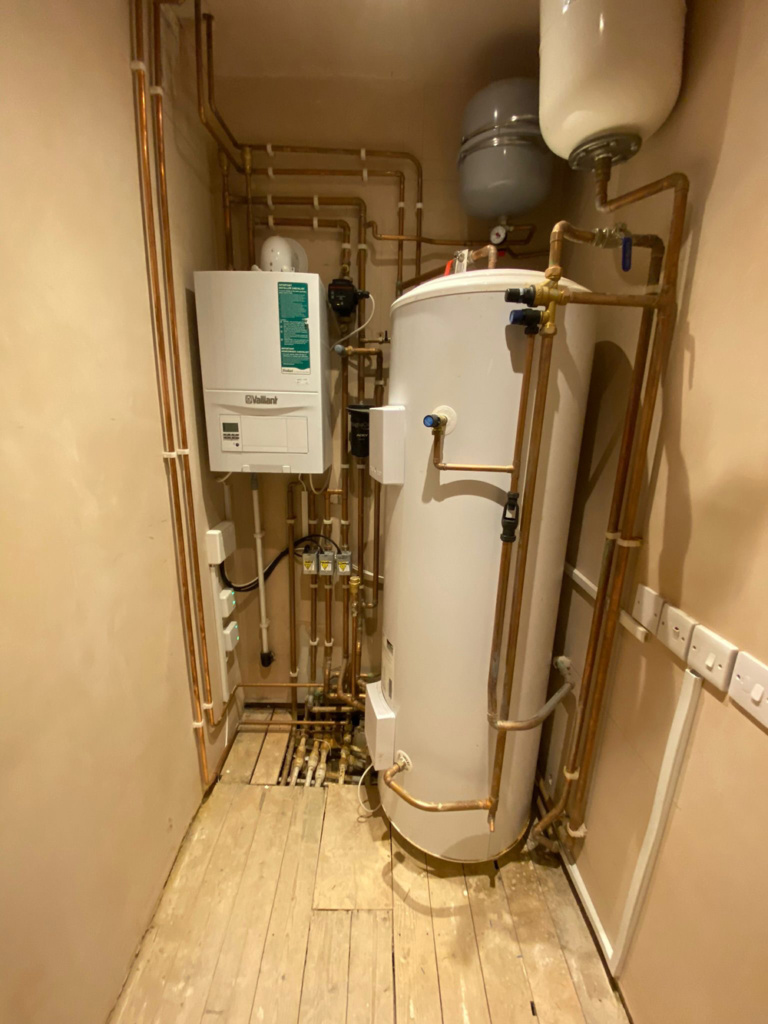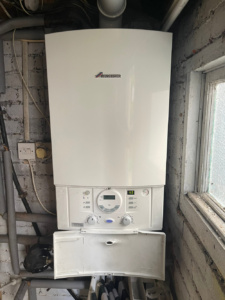
Air source heat pumps are a popular choice for homeowners looking for an efficient and cost-effective way to heat and cool their homes. But how exactly do these systems work?
At a high level, air source heat pumps use electricity to draw heat from the air outside and transfer it into your home. They have a compressor that pumps refrigerant through a series of coils, which absorbs heat from the air and releases it inside your home. The system can also be reversed to cool your home by removing heat from the inside and releasing it outside.
Here is a more detailed look at the inner workings of an air source heat pump:
- The outdoor unit: This is the part of the heat pump that is located outside your home. It consists of a compressor, a refrigerant coil, and a fan. The compressor pumps refrigerant through the system, while the fan draws in outside air and blows it over the refrigerant coil.
- The refrigerant: The refrigerant is a chemical that absorbs and releases heat as it flows through the system. When it is in a liquid form, it absorbs heat from the air outside and becomes a gas. When it passes through the compressor, it is pressurized, which causes it to release heat. The heat is then used to warm your home.
- The indoor unit: This is the part of the heat pump that is located inside your home. It consists of an evaporator coil and a fan. The refrigerant gas from the outdoor unit passes through the indoor unit and flows through the evaporator coil. As it cools, it becomes a liquid and releases heat into your home. The fan then blows air over the evaporator coil, distributing the warm air throughout your home.
- The thermostat: The thermostat is what controls the heat pump and determines when it should turn on or off. You can set the thermostat to maintain a specific temperature in your home, and the heat pump will automatically turn on or off as needed to maintain that temperature.
- The reversing valve: The reversing valve is what allows the heat pump to switch between heating and cooling modes. When it is in heating mode, the valve directs the flow of refrigerant to the indoor unit, where it releases heat into your home. When it is in cooling mode, the valve reverses the flow of refrigerant, allowing it to absorb heat from the inside of your home and release it outside.
Overall, air source heat pumps are a simple yet effective way to provide heating and cooling for your home. By using electricity to draw heat from the air and transfer it into your home, they can be a more efficient and cost-effective option compared to traditional heating systems that rely on fossil fuels.

The Components of an Air Source Heat Pump
An air source heat pump is made up of several key components that work together to provide heating and cooling for your home. These components include:
- The outdoor unit: This is the part of the heat pump that is located outside your home. It consists of a compressor, a refrigerant coil, and a fan. The compressor pumps refrigerant through the system, while the fan draws in outside air and blows it over the refrigerant coil.
- The refrigerant: The refrigerant is a chemical that absorbs and releases heat as it flows through the system. When it is in a liquid form, it absorbs heat from the air outside and becomes a gas. When it passes through the compressor, it is pressurized, which causes it to release heat. The heat is then used to warm your home.
- The indoor unit: This is the part of the heat pump that is located inside your home. It consists of an evaporator coil and a fan. The refrigerant gas from the outdoor unit passes through the indoor unit and flows through the evaporator coil. As it cools, it becomes a liquid and releases heat into your home. The fan then blows air over the evaporator coil, distributing the warm air throughout your home.
- The thermostat: The thermostat is what controls the heat pump and determines when it should turn on or off. You can set the thermostat to maintain a specific temperature in your home, and the heat pump will automatically turn on or off as needed to maintain that temperature.
- The reversing valve: The reversing valve is what allows the heat pump to switch between heating and cooling modes. When it is in heating mode, the valve directs the flow of refrigerant to the indoor unit, where it releases heat into your home. When it is in cooling mode, the valve reverses the flow of refrigerant, allowing it to absorb heat from the inside of your home and release it outside.
By understanding the components of an air source heat pump and how they work together, you can better understand how this system provides efficient and cost-effective heating and cooling for your home.

The Role of Refrigerant in an Air Source Heat Pump
Refrigerant is a crucial component of an air source heat pump, as it is responsible for absorbing and releasing heat as it flows through the system. Here is a closer look at the role of refrigerant in an air source heat pump:
- Absorbing heat: When the refrigerant is in a liquid form, it absorbs heat from the air outside and becomes a gas. This process occurs in the outdoor unit of the heat pump, where a fan draws in outside air and blows it over the refrigerant coil. As the refrigerant absorbs heat, it turns into a gas and is pressurized by the compressor.
- Releasing heat: As the refrigerant gas is pressurized by the compressor, it releases heat. This heat is then used to warm your home. The refrigerant gas flows through the indoor unit of the heat pump, where it passes through the evaporator coil. As it cools, it becomes a liquid and releases heat into your home. A fan then blows air over the evaporator coil, distributing the warm air throughout your space.
- Cooling: In addition to providing heating, an air source heat pump can also be used for cooling. To cool your home, the heat pump reverses the flow of refrigerant through the system. Instead of absorbing heat from the air outside, it absorbs heat from the inside of your home and releases it outside. This process is controlled by the reversing valve, which directs the flow of refrigerant to either the indoor or outdoor unit depending on whether you are heating or cooling.
Overall, the role of refrigerant in an air source heat pump is to absorb and release heat as it flows through the system. By using electricity to pressurize the refrigerant, the heat pump is able to efficiently and effectively provide heating and cooling for your home.
